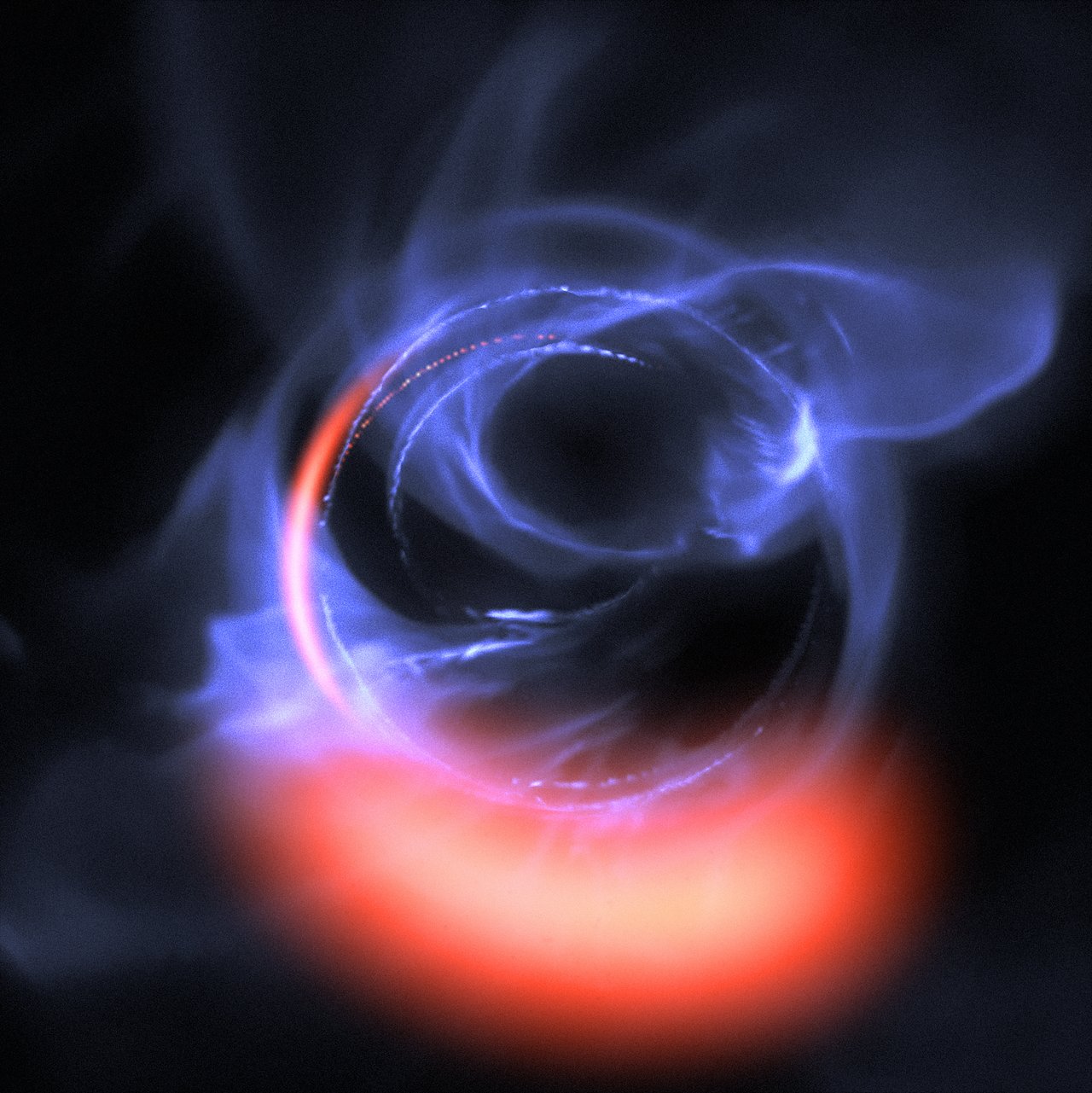This Stuff Is Circling the Drain of Our Galaxy's Monster Black Hole (Videos)
Astronomers have for the first time observed clumps of gas orbiting dangerously close to the giant black hole that lies at the heart of our Milky Way galaxy.
Scientists think a supermassive black hole called Sagittarius A* lurks at the center of the Milky Way. Recent observations of this area show that clumps of gas orbit at about 30 percent of the speed of light on a circular path just outside the black hole's event horizon, according to a statement from the European Southern Observatory (ESO).
Using the GRAVITY instrument on ESO's Very Large Telescope, astronomers detected flares of infrared radiation coming from the accretion disc surrounding Sagittarius A*. Their findings not only confirm the presence of the supermassive black hole but also suggest that material is orbiting incredibly close to the black hole's event horizon. What's more, the recent observations offer the most detailed view yet of material orbiting so close to a black hole, according to the statement. [The Strangest Black Holes of the Universe]

"It's mind-boggling to actually witness material orbiting a massive black hole at 30 percent of the speed of light," Oliver Pfuhl, one of the study researchers and a scientist at the Max Planck Institute for Extraterrestrial Physics, said in the statement. "GRAVITY's tremendous sensitivity has allowed us to observe the accretion processes in real time in unprecedented detail."
Monster black holes lurk at the centers of most galaxies in the universe. Gravitational forces from these cosmic behemoths draw in surrounding gas and dust. Most matter in the accretion disc surrounding the Milky Way's black hole orbits at a safe distance. However, anything that gets too close risks being drawn past the event horizon, where it can never escape from the black hole's gravitational pul. The flares originate from material in the innermost stable orbit according to the statement — the closest matter can get before passing the point of no return.
Astronomers recorded the bright infrared emissions as they observed a star called S2 pass through the extreme gravitational field near Sagittarius A* in May 2018.
During the star's close flyby, the team saw the strong infrared emissions coming from highly energetic electrons located very close to the galaxy's black hole. Specifically, they found that the emissions originate from magnetic interactions in the very hot gas orbiting very close to Sagittarius A*. Astronomers observed the emissions using GRAVITY, as well as the SINFONI instrument, which is also part of the VLT.
Get the Space.com Newsletter
Breaking space news, the latest updates on rocket launches, skywatching events and more!
"We were closely monitoring S2, and of course we always keep an eye on Sagittarius A*," Pfuhl said in the statement. "During our observations, we were lucky enough to notice three bright flares from around the black hole — it was a lucky coincidence!"
Their findings were published Oct. 18 in the journal Astronomy & Astrophysics.
Follow Samantha Mathewson @Sam_Ashley13. Follow us @Spacedotcom, Facebook and Google+. Original article on Space.com.
Join our Space Forums to keep talking space on the latest missions, night sky and more! And if you have a news tip, correction or comment, let us know at: community@space.com.

Samantha Mathewson joined Space.com as an intern in the summer of 2016. She received a B.A. in Journalism and Environmental Science at the University of New Haven, in Connecticut. Previously, her work has been published in Nature World News. When not writing or reading about science, Samantha enjoys traveling to new places and taking photos! You can follow her on Twitter @Sam_Ashley13.









